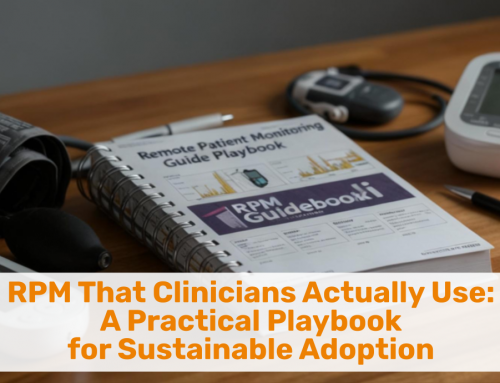From First Patient to Sustainable Practice
In last week’s article, we introduced a framework to help clinicians launch a virtual clinic. That blueprint included four phases:
BEFORE – Clarifying your market, value proposition, and business model
SET UP – Laying the legal, financial, tech, and operational foundations
LAUNCH – Going live with patients and refining your offering
RUN & OPTIMIZE – Sustaining, improving, and growing your clinic
If you missed it, you can start with the first set of steps (BEFORE and SET UP) here: Launching a Telehealth Clinic — Getting Started
Now on to the two remaining phases — LAUNCH and RUN & OPTIMIZE: From your first few patients to the optimized systems that will keep your practice running smoothly, in today’s article I offer some practical steps to help you move from startup to sustainability.
Phase 3: LAUNCH
Small is Smart!
Unlike the launch of a rocket where you oftentimes only have one attempt (unless that attempt is a stepping stone towards a larger goal, such as putting people on Mars), launching a virtual clinic is simply about getting the first set of patients, your first customers.
The objective here is to start small – three patients or even one on the first day or two is great, as you probably would not be prepared to handle 50 patients right away anyway.
Learning is Lovely!
Next, your mindset has to be on learning. This is not the phase to make a profit or even to generate revenue. This stage is your investment in learning what works — and what doesn’t (which is even more valuable!). And to eliminate the things that don’t work and improve on and amplify the things that do work.
In order to do so, you must be in a constant state of iterating, fine tuning, optimizing, throwing ideas away that did not work (no room for ego here) and coming up with new ideas based on the insights you gain.
So here are your 5 steps to launch your virtual care clinic:
(1) Proof-of-Concept with Ideal Patients: Crawl before you walk. Before you go out and announce yourself to the world with your marketing plan, launch your service with the intent of validating your assumptions (about the patients, your care model, your reimbursement/payment model, the technology, etc.).
Try to “recruit” 5–10 real patients and observe what’s working and what’s not. Systematically take and analyze feedback. The goal is to build confidence while ironing out the kinks. This includes the processes for scheduling an appointment, rooming a patient, following up with them, billing them (or getting reimbursed). This includes validating all your systems too – your scheduling, client management, payment processing, accounting, medical record system, etc.
You don’t want to open the faucet until you’re ready to handle what will be coming at you!
(2) Ignite Your Marketing Engine: Start executing your first set of marketing and awareness building activities that you established at the beginning of the SET UP phase. This could simply be tapping into your network or giving the green light to referral partnerships. Or it could be an ad campaign on Facebook or other places where your targeted patients hang out.
Start with one of your persona’s first and don’t spread yourself too thin too quickly. Give the marketing magic some time (and money) to work.
(3) Practice Your Pitch: Whether you’re introducing yourself to patients, partners, or a community group, have a clear and compelling explanation of your value proposition: Who do you serve? What (health) problems do you solve? Why are you different from the other options available?
Don’t lead with technology, branding, or even your expertise. Talk about the outcome, talk about the difference in results your service will make in your patients’ lives. Tell a story about a patient – ideally one from your past (even though you probably were not on your own back then, but that does not matter) where you transformed a patient’s health and thought to yourself: I want more patients to have access to this.
(4) Optimize the Patient Experience: Walk through every step from a patient’s perspective: scheduling, registration, insurance/payment info, intake, the visit itself, payment (or reimbursement) processing, and follow-up. Remove any friction points wherever (and whenever) you find them.
(5) Track Early Metrics: Even when you are launching small, it is critical to establish good “data-driven decision making” habits early on. You wouldn’t drive a car without a dashboard, so don’t drive your virtual clinic without one either.
Some examples of metrics to track include number of visits, revenue, no-show rates, patient satisfaction, staff satisfaction, your (and other clinicians’) satisfaction, marketing cost, etc. Not every metric will drive action, but not collecting it is like flying blind and you are sure to hit a mountain or the ground when you do.
As you are tracking, look for data in the historical/time-bound context. What are the trends? Is there a “seasonality” (e.g., Mondays vs. Fridays)? Which metrics are related? Which ones are not? What marketing tactics get you clients in the door?



Run your virtual clinic with a Performance Dashboard
Phase 4: RUN & OPTIMIZE
Sustain, simplify, and scale what’s working.
Now that you’re up and running it’s time to start acting on that data you’ve collected. Beyond the small tweaks during your early days, it is now time to look at sustainability and at the ability to grow. Many young businesses fail when they scale, because the lack of a solid foundation from which to expand.
Here are the 6 steps to follow as you run and optimize your virtual clinic:
(1) Review Performance Regularly: This is managing your business. As you identified and then refined your metrics on the last step of the launch phase, you now have a set of trusted metrics that help you run your clinic. But as you grow, you need to now instill some more discipline in your regular routines.
As for the performance of your clinic, schedule weekly or monthly reviews. Compile, review, and analyze the data — and the trends.
Go back to the last of the 9 questions you asked yourself (“So, Doctor, You Want to Launch a Telehealth Clinic?”): “What does success look like?” and see if you can correlate your answer with the metrics you are collecting. Are you moving into the right direction, toward success?
(2) Refine Your Offer and Pricing: After serving a few dozen patients, you’ll have insight into what people value — and what value people place on your service.
If you are cash-based or subscription-based, look at lowering or increasing(!) your pricing. If you don’t take insurance, consider taking insurance if that is the main reason people tell you they are not using your service even though they are interested.
See if you can add more value to your offer. Sometimes it’s the little unexpected “delighters” that traditional healthcare cannot offer that will make the difference for some. Ask every patient: How could we have done better? What else can we do for you?
Finally, try A/B testing – try out different offerings, different price points and experience. Unlike medicine you don’t have to get it right the first time. You can experiment with marketing messages, price points, service offerings, etc.
(3) Automate and Delegate: There will quickly come a time where you have to give up control, where you have to start letting other people “take care of your baby”. Use virtual assistants, virtual schedulers, schedule reminder systems, and outsource your billing and bookkeeping and, sooner or later, also your marketing.
Remember the phrase “practicing on top of your license”. Make sure you relentlessly review your scope of responsibilities and “only do the things only you can do”.
Side note: in my role as the CEO of a boutique consulting firm I’ve been on a quest for years to replace myself with people who are even better at what I am good or great at.
(4) Improve Based on Feedback: Similar to the “launch and learn” approach in the previous phase, you want to continuously evolve. A business that does not evolve will devolve and become obsolete. The market changes, patients’ expectations change, the market where your messaging resonates may be different than the target population you had in mind initially.
Be especially diligent about the patient experience from beginning to end. Repeat patients and word-of-mouth referrals are the two most cost-effective marketing. Relentlessly optimize and perfect the patient experience, make it smooth, easy, even fun. This is where you can easily differentiate yourself from the traditional healthcare system. When was the last time that you had a doctor’s visit it was “fun”?
(5) Build Thoughtful Partnerships: Marketing a niche clinical service is hard and very costly. By teaming up with others that can “bring you” more patients (and vice versa), but expanding your offerings through complementary services you create win-win constellations that help you and your partners.
Team up with other specialists or expand into behavioral health or wellness to augment your expertise. Partnerships can extend reach without a huge marketing spend.
(6) Stay Aligned with Your Purpose: When your job becomes work, it’s mostly because you are out of touch with the reason why you wanted to launch a virtual clinic in the first place. If it was about more freedom and continuing to practice medicine, you may have to delegate more and take on less.
Don’t forget: this is your business, you created it because you wanted it. Long-term sustainability can only be achieved when your daily actions are in alignment with your values and priorities.
From Launch to Longevity
Starting is just the beginning. Staying consistent, staying focused, and staying aligned with your goals is what builds long-term sustainability.
If you’ve made it this far in the blueprint, you’re already ahead of the curve. Most people stall in the “thinking about it” phase. But you have taken action!
If you’ve been just reading along, dreaming, you are still ahead of the curve: at least you are going into your journey with open eyes and already know more than most “entrepreneurially-minded physicians”.
Would you like a thought partner, a coach, advisor, or consultant as you launch or optimize your virtual clinic? Text me at (657) 464-3648 and let’s chat about your vision.








To receive articles like these in your Inbox every week, you can subscribe to Christian’s Telehealth Tuesday Newsletter.
Christian Milaster and his team optimize Telehealth Services for health systems and physician practices. Christian is the Founder and President of Ingenium Digital Health Advisors where he and his expert consortium partner with healthcare leaders to enable the delivery of extraordinary care.
Contact Christian by phone or text at 657-464-3648, via email, or video chat.






